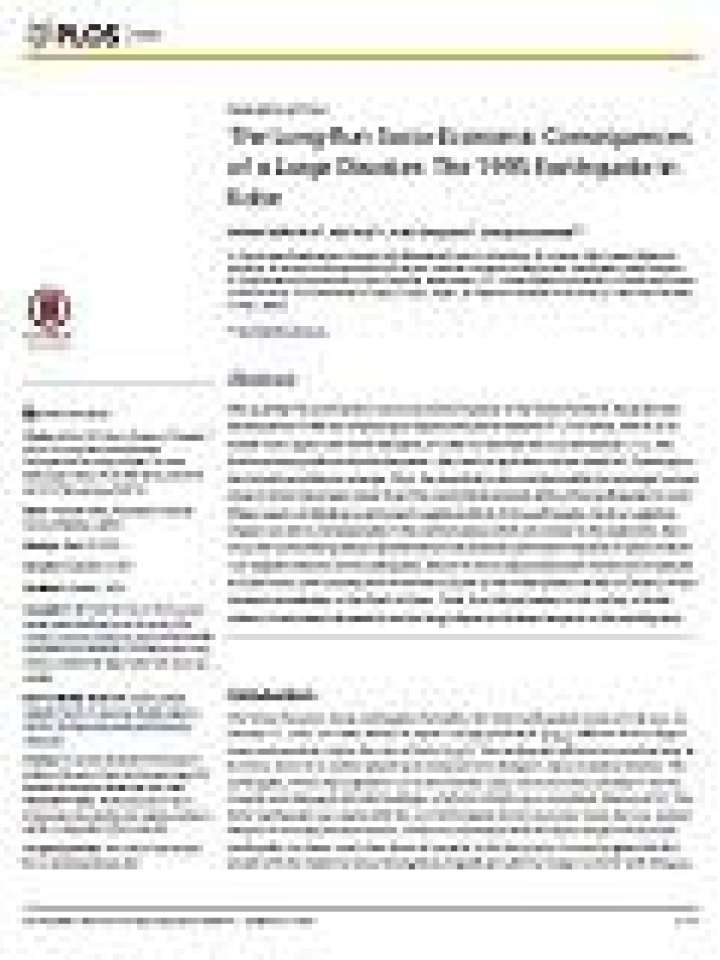The long-run socio-economic consequences of a large disaster: The 1995 earthquake in Kobe
PLoS ONE 10(10): e0138714. doi:10.1371/journal.pone.0138714
This paper presents the quantification of the "permanent" socio-economic impacts of the Great Hanshin-Awaji (Kobe) earthquake in 1995 by employing a large-scale panel dataset of 1,719 cities, towns, and wards from Japan over three decades.
Three important empirical patterns emerge from the study: First, the population size and especially the average income level in Kobe have been lower than the counterfactual level without the earthquake for over fifteen years, indicating a permanent negative effect of the earthquake. Second, the surrounding areas experienced some positive permanent impacts in spite of short-run negative effects of the earthquake. Third, the furthest areas in the vicinity of Kobe seem to have been insulated from the large direct and indirect impacts of the earthquake.
Explore further
